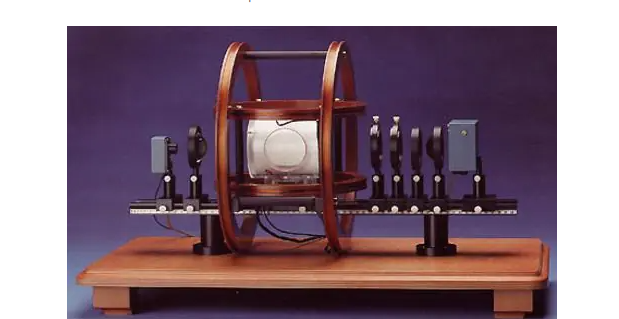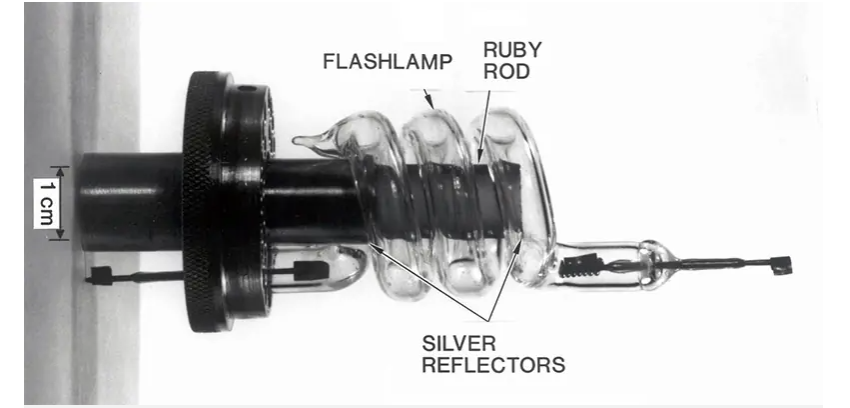Laser is one of the 20th century’s most transformative inventions—changing fields from medicine to communications, manufacturing to scientific research. This extraordinary device gets its name from "Light Amplification by Stimulated Emission of Radiation." It came from a fascinating mix of theoretical physics, experimental skill, and engineering innovation over 60 years.
The story starts on 1900. German physicist Max Planck changed how we understand energy and light. He tried to explain blackbody radiation—electromagnetic radiation from heated objects. Planck made a radical idea that shook classical physics. He said energy isn’t continuous. It comes in discrete packets called "quanta." Each quantum’s energy is proportional to its frequency: E = hν. Here, h is Planck's constant. This idea challenged the old view that energy flows smoothly like water. It gave the first look into quantum mechanics—where energy exists in specific units.
Albert Einstein built on Planck’s work. In 1905, he explained the photoelectric effect—his own revolutionary contribution. Einstein said light is made of discrete particles called photons. Each photon carries energy E = hν. This bold idea said electromagnetic radiation has both wave and particle properties. This is called wave-particle duality. At first, people were skeptical. But it gave key insights into how light and matter interact. Photons have energy, momentum, and act like particles—while still being waves.
On 1913, Danish physicist Niels Bohr created a revolutionary atomic model. It was key to understanding laser physics. Bohr said electrons orbit the nucleus in specific, quantized energy levels. Atoms can only absorb or emit energy when electrons move between these levels. His model introduced a key relationship: hν = E₂ - E₁. Here, hν is the energy of an emitted or absorbed photon. E₂ - E₁ is the energy difference between two atomic levels. This became the cornerstone for predicting atomic emissions.
In 1916, Einstein made his most significant contribution to laser physics—his radiation theory. He used photon ideas to re-derive Planck’s blackbody radiation formula. Einstein found three key processes that control light-matter interactions:
Absorption: An atom takes in a photon and moves from a lower to a higher energy state.
Spontaneous Emission: An excited atom naturally returns to a lower state, emitting a photon.
Stimulated Emission: An incoming photon makes an excited atom emit an identical photon. This creates two coherent photons.

Einstein’s idea of stimulated emission was revolutionary. He showed that when a photon hits an excited atom, it can make the atom emit another photon. This photon has the same frequency, phase, and direction. This process makes coherent light—all photons move in perfect sync. Einstein realized something: if enough atoms stay in excited states, stimulated emission can create a cascade. One photon becomes two, two become four. This could make intense, coherent light beams. But for 30 years, this was just a theoretical idea. It had no practical use.
The key to making Einstein’s theory practical arrived in the 1940s. On 1946, Felix Bloch introduced population inversion. This is when more atoms are in excited states than lower ones. This was the missing piece—normal conditions have most atoms in their lowest energy states. In 1947, Willis Lamb and Robert Retherford at Columbia University showed something: stimulated emission could be achieved with population inversion. This rekindled interest in Einstein’s 30-year-old theory. The next year, Edward Purcell and Felix Bloch saw population inversion in experiments. This was the first time. They won the 1952 Nobel Prize in Physics.

French physicist Alfred Kastler made another key contribution in 1949. He invented optical pumping. This technique uses light to excite atoms to higher energy levels. It creates the population inversion needed for stimulated emission. Kastler’s work won him the 1966 Nobel Prize in Physics. It gave a practical way to achieve the conditions Einstein described in theory.
The first practical use of Einstein’s stimulated emission theory came in 1954. It was the invention of the MASER—Microwave Amplification by Stimulated Emission of Radiation. Charles Townes at Columbia University worked with James Gordon and Herbert Zeiger. They showed an ammonia molecular maser worked. At the same time, Russian physicists Nikolay Basov and Aleksandr Prokhorov were making similar devices. They worked at the Lebedev Physical Institute. This parallel work led to three scientists sharing the 1964 Nobel Prize in Physics. The reason: fundamental work in quantum electronics. It led to oscillators and amplifiers based on the maser-laser principle.
Building on maser success, Charles Townes and Arthur Schawlow at Bell Labs started exploring something. They wanted to extend the maser principle to optical frequencies. In 1958, they published a groundbreaking paper. It was called "Infrared and Optical Masers" in Physical Review. It laid the theoretical foundation for the laser. Their paper explained how mirrors could make an optical cavity. This cavity would amplify light through stimulated emission. Bell Labs filed a patent on July 30, 1958. No working device existed yet.
Teams worldwide raced to build the first laser. But Theodore Maiman at Hughes Research Laboratories in Malibu, California, took a different path. Others proposed using gases. Maiman chose a solid-state approach—he used an synthetic ruby crystal. On May 16, 1960, Maiman made the world’s first laser work. His device had a ruby rod. An helical flashlamp surrounded it. The flashlamp pumped the ruby to get population inversion. The laser made coherent red light. Its wavelength was on 694.3 nanometers.

Hughes Aircraft Company announced Maiman’s achievement on July 7, 1960. It was a press conference. This marked the start of the laser age. Physical Review Letters rejected Maiman’s first paper. But Nature published his 300-word description on August 6, 1960. It was about the world’s first laser.
China’s scientific community reacted quickly to the laser breakthrough. Wang Zhijiang led the team at the Changchun Institute of Optics and Fine Mechanics. Chinese scientists made their first ruby laser in September 1961. This was just over a year after Maiman’s success. It showed China’s growing skills in advanced physics research. The Chinese team included Deng Ximing and others. They made several technical innovations. These improved the original design. They got higher efficiency than Maiman’s first device. Their work laid the foundation for China’s later advances in laser technology and nuclear fusion research.
After these initial successes, laser technology grew fast. By December 1960, Ali Javan, William Bennett Jr., and Donald Herriott at Bell Labs made the first continuous-wave helium-neon laser. Then came many new laser types. They used different gain media: gas lasers, ion lasers, semiconductor lasers, and more.
Laser’s impact on modern life is huge. Supermarket barcode scanners (1974) and compact disc players (1980s)—lasers became part of daily life fast. Today, they make things possible: fiber-optic communications, precision manufacturing, delicate eye surgery, quantum computing research. The journey from Planck’s quantum hypothesis to Maiman’s ruby laser is a great example. It shows how theoretical physics can lead to transformative technologies. Each breakthrough built on the last. It created a chain of discoveries. In the end, humanity got one of its most versatile tools. Laser’s development shows the power of international scientific collaboration. It also shows how important basic research is. It started as abstract theoretical ideas about light and matter. It evolved into a technology that shapes our world in many ways. It advances scientific understanding, improves human health, and connects our global society. This amazing story reminds us: today’s theoretical discoveries could be tomorrow’s revolutionary technologies. They continue the innovation legacy that gave us the laser. It’s truly one of the brightest achievements in human scientific history.
Contact: Jason
Phone: +8613337332946
E-mail: [email protected]
Add: Hangzhou City, Zhejiang Province, China